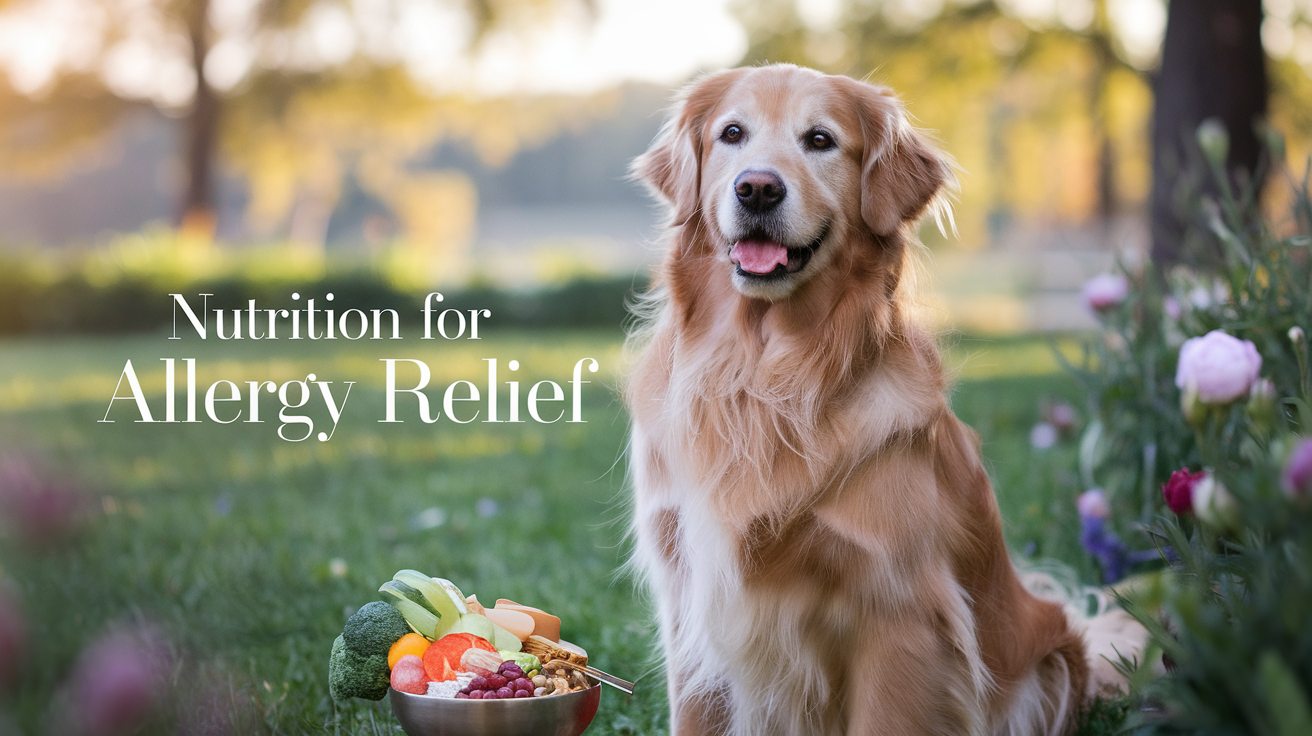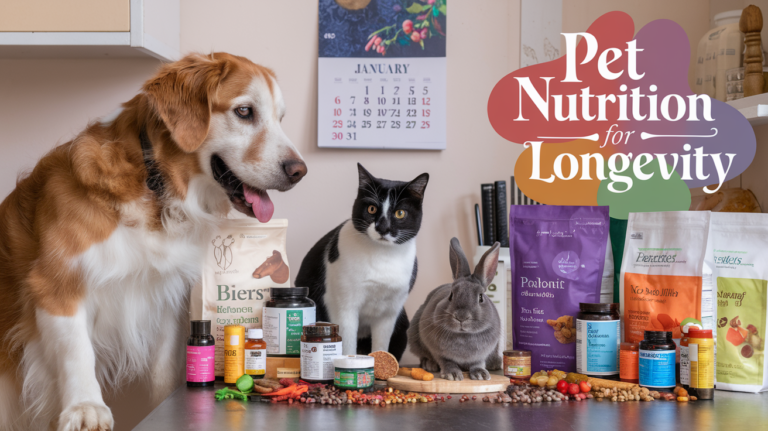Is your furry pal scratching, sneezing or experiencing skin irritations constantly? You’re not alone. Seasonal allergies can ruin your pet’s life in a year-round battle for comfort that’s undermining their overall health. But what if it was possible to unlock these allergies and treat them forever?
The most common are seasonal allergies in pets, and they affect far more pets than many owners may realize. If left unchecked they can lead to discomfort, irritability and even more serious health concerns. You may be thinking, “Why does my dog keep scratching and could it be allergies?” Well, it often is. And most crucially, there are ways to treat these symptoms that don’t simply involve medications. Join us in exploring how a holistic nutritional approach—what we refer to as the Nutrition Matrix—can support addressing pet discomfort year-round.
Introduction
Pets are family. And when loved ones are at their low point, it hurts. Spring allergies can be a nightmare for your pet, with constant itching, red skin and even ear infections. The Seasons Please Leave Me Alone: Every time the seasons change they’d be stuck in an infinite loop of needing to be uncomfortable — but in a good way. Not fun, right? What if there was a way to alleviate that discomfort without medications? A comprehensive approach centering around only what your pet consumes may be the key.
Nutrition is more than pouring a bowl. It’s about strengthening your pets’ immune system, and promoting skin health, but also changing their well-being. Then, when viewed from a nutritional perspective, you start to realize how much diet impacts how your pet interacts with allergens. So let’s go through the different parts together.
The Pet Nutritionist’s Nutrition Matrix
Introducing the Nutrition Matrix by The Pet Nutritionist – a new paradigm shift in the way we address allergies in pets. 🐾 Now, in dominating your pet’s health like never before, you need to understand the intricate link between diet and the manifestation of allergic responses. In a world your four-legged friend isn’t hindered by chronic discomfort, their coat gleams, and allergy symptoms are removed from the equation.
So, in this extensive guide, we left no stone unturned, covering everything pet parents must know from diagnosing to preventing seasonal allergies to their furry friend. You will learn why the proper nutrition makes all the difference, cutting edge treatment strategies, and discovered the secrets to handling allergy-related complications. Prepare to revolutionize your pet’s life and bid farewell to allergy troubles – welcome to a whole year of comfort!
Understanding Seasonal Allergies in Pets

Allergies in pets cover a broad range of sensitivities.
Seasonal allergies in pets, commonly known as atopy, is caused when the body’s immune system reacts to airborne allergens such as pollen, grass, mold, or dust mites. In summary, when your pet breathe in or comes into contact with these substances, their immune system goes into overdrive which causes those vile symptoms we all hate. And the reality is that these allergens are ubiquitous — particularly in spring and autumn.
DOG ATOPY Definition and Pathogenesis: Halliwell (2006) It’s a case of the immune system overreacting to harmless substances. And to be fair — who wouldn’t be overpoweringly attacked by pollen when there are flowers everywhere? But our pets are not immune to it.
Consider this: Your friend is always sneezing because of the pollen, and there’s nothing they can do about it. That’s what you pet experiences, pretty much. And the causes? They’re mainly environmental. Pollen from trees, grasses and weeds; mold spores; and even dust mites can be to blame. Hensel et al. (2015) elaborate that these common allergens are a leading cause of seasonal allergies in pets.
Common symptoms and signs
For seasonal allergies in your pets, identifying the signs is essential. You may notice these signs of discomfort from your furry friend:
- Excessive scratching or biting at their coat or skin
- Red or inflamed areas on the skin
- Increased shedding
- Compulsive paw licking (especially in dogs)
- Discomfort from boot scooting or anal gland licking
- Chronic ear infections
- Respiratory issues like difficulty breathing or coughing (more common in cats)
In dogs, you may also observe:
- Hair loss due to excessive scratching
- Development of “hot spots” – red, inflamed skin areas
- Facial rubbing and sneezing
- Eye discharge
Causes of allergies in pets
Unlike food allergies, your pet’s allergies are generally caused by environmental exposure. Common allergens include:
| Allergen Type | Examples |
|---|---|
| Plant-based | Pollen, grasses, weeds |
| Fungi | Mold spores |
| Insects | Flea saliva |
| Indoor | Dust mites |
That said, your pet’s immune system nefariously believes these harmless substances are a threat resulting in an allergy. Seasonal allergies in pets typically present between the ages of one to three years, and some breeds may be more prone, including setters, as well as pugs and bulldogs.
Effects on health and quality of life in pets
Seasonal allergies can put a big damper on your pet’s quality of life:
- Skin irritation and inflammation can lead to discomfort and potential infections..
- Chronic ear infections can lead to persistent pain and hearing loss.
- Respiratory issues can affect your pet’s ability to breathe normally.
- Excessive scratching and licking can damage the skin, and lead to hair loss.
- Generalized pain can result in behavioral changes and reduced quality of life.
Your pet’s allergies can get worse with time if they are not treated, so it is important to intervene early. There’s no permanent cure for seasonal allergies, but there are various management strategies available to alleviate your pet’s misery.
Having covered the basics of understanding seasonal allergies in our pets, now let us look at the part that nutrition plays in reducing these allergies. Learn about how dietary and nutritional enables good health and wellness for your pet while keeping allergy manifests at bay.
Traditional Diagnostic Approaches for Pet Allergies
Now that we’ve explored how nutrition plays a crucial role in alleviating pet allergies, let’s delve into the diagnostic approaches that can help identify and manage these allergies effectively.
A. Veterinary examination and allergy tests
When you suspect your pet might be suffering from allergies, the first step is to consult with a certified allergist or veterinarian. They will conduct a thorough examination and may perform specific allergy tests to pinpoint the allergens affecting your pet. Here’s what you can expect:
- Medical history review
- Physical examination
- Skin prick tests
- Blood tests
These tests help identify the specific allergens triggering your pet’s immune response, whether they’re environmental, food-related, or seasonal.
B. Elimination process for identifying allergen sources
Once potential allergens are identified, your veterinarian may recommend an elimination process to narrow down the specific triggers. This approach involves:
| Step | Action | Duration |
|---|---|---|
| 1 | Remove suspected allergens from your pet’s environment | 4-6 weeks |
| 2 | Gradually reintroduce potential allergens | 1-2 weeks per allergen |
| 3 | Monitor your pet for allergic reactions | Ongoing |
| 4 | Document any symptoms or changes | Throughout the process |
This methodical approach helps you and your vet determine which allergens are causing your pet’s discomfort, allowing for more targeted treatment strategies.
C. Distinguishing between seasonal and year-round allergies
It’s crucial to differentiate between seasonal and year-round allergies to provide the most effective care for your pet. Here’s how you can distinguish between the two:
- Seasonal allergies:
- Symptoms appear during specific times of the year
- Often related to pollen, grass, or certain plants
- May coincide with human allergy seasons
- Year-round allergies:
- Symptoms persist throughout the year
- Often caused by indoor allergens like dust mites, mold, or certain foods
- May be exacerbated by environmental factors in your home
By understanding the pattern of your pet’s allergies, you can work with your veterinarian to develop a tailored treatment plan that addresses your pet’s specific needs.
With a clear understanding of your pet’s allergies through proper diagnosis, you’re now ready to explore comprehensive treatment strategies. In the next section, we’ll discuss various approaches to managing your pet’s allergies, including medications, environmental modifications, and long-term management techniques to ensure your furry friend’s comfort year-round.
The Role of Nutrition in Alleviating Allergies

Having made sense of seasonal allergies in our pets, what we should remember is how nutrition can be core in providing relief and comfort. Understanding where nutrition comes into play can help keep your pet healthy year-round.
Build Up the Immune System
Ever have a day when nothing feels right, and then you realize you haven’t eaten something from all five food groups — meat, dairy, grains, fruit and vegetable — and then that balance makes you feel better? The same is true for pets. If your school of thought is that the immune system is improved with a well-balanced nutrient-rich diet that can aid the body to fight against allergens better then terrific! Barker et al. (2018) have indicated that, in veterinary medicine, nutritional immunology is very important. A balanced diet is critical for every function in the body, including the immune system’s ability to respond to threats.
And consider this — what’s more rewarding than a natural boost coming from the food you choose for your pet? It’s not just about popping supplements; it’s about building a diet that will naturally help support immune strength. Hand et al. (2010) emphasizes that, maintaining a balanced diet is essential for improving overall health. That means that with every bite your pet takes, it’s working towards a stronger, more resilient body to fend off those pesky allergens.
Anti-Inflammatory Nutrients
Now let’s move on to inflammation. So when your pet is allergic, one of the biggest problems is inflammation that is making them uncomfortable. If the skin is red, swollen, and irritated, it’s not only uncomfortable but also a fertile ground for further complications. That’s where anti-inflammatory nutrients come in.
One superstar in this department is omega-3 fatty acids. You can find them in fish oils, and they’re known for the way they help reduce inflammation. These fatty acids can help your allergy-prone pet in a therapeutic manner. (Bauer, 2011) They soothe the skin and quell that unending itching. It’s not only Omega-3s, either — antioxidants such as vitamins E and C are crucial, too. Watson et al. (2018) : These vitamins play a significant role in protecting against oxidative stress, which is frequently linked to inflammation.
Imagine the relief your pet could experience when their skin isn’t burning from inflammation 24/7. It’s something like lowering the heat on a burner that’s been left on high too long. This isn’t just theorizing — real science and research supports this.
Natural supplements that can help manage allergies
Natural supplements can help manage allergies in your pet by adding them to their diet. The supplements are often composed of:
- Omega-3 fatty acids
- Antioxidants
- Probiotics
Combined with these ingredients, it provides both immune support and is a natural anti-inflammatory, which is the cornerstone of controlling allergies
The main ingredients and their benefits
You would want to opt for novel protein sources and limited ingredient formulations when choosing food for your allergic pet. Here’s a table highlighting some key ingredients and their benefits:
| Ingredient | Benefit |
|---|---|
| Kangaroo | Novel protein, reduces allergic reactions |
| Rabbit | Uncommon protein source, improves digestibility |
| Black soldier fly larvae | Sustainable protein, enhances skin health |
| Sweet potato | Soluble fiber, supports gut health |
| Quinoa | Gluten-free grain alternative, rich in nutrients |
These ingredients can improve your allergic pet’s gastrointestinal symptoms and also contribute to healthier skin and coats.
Importance of gut health and immune system support
The function of your pet’s gut and immune system are highly interlinked. When you zero in on foods that support digestive health, you’re also strengthening their ability to stave off allergens. Consider the following:
- Include soluble fibers in your pet’s diet to promote beneficial gut bacteria
- Look for foods with prebiotics and probiotics to enhance digestive function
- Ensure balanced nutrition to support overall immune system health
You should introduce to any new foods or supplements gradually to avoid digestive upset. Introduce the new food by mixing little amounts with their current diet, gradually increasing the proportion over a few days.
Skin Barrier Support
Your pet’s skin isn’t just a covering; it’s a critical barrier that protects against environmental irritants. When the skin barrier is compromised, allergens can easily penetrate, leading to more severe allergic reactions. Nutrients that support skin health are therefore vital. Olivry et al. (2010) detail which nutrients help maintain skin integrity, ensuring that the barrier remains robust against the onslaught of allergens.
Rees et al. (2001) further connect the dots between diet and skin integrity. When your pet’s diet includes the right balance of vitamins, minerals, and fatty acids, their skin is better equipped to serve as a defense mechanism. And let’s face it—who wouldn’t prefer a naturally healthy skin barrier over one that’s prone to irritation and breakdown?
Consider this: if you had a leaky umbrella in a rainstorm, you’d want it fixed, right? The same goes for your pet’s skin. Strengthening the barrier means fewer opportunities for allergens to wreak havoc.
My Implementation of the Nutrition Matrix
After I let a flea-infested stray cat into our house, my lab, Molly, developed allergies. She scratched, she bit, she scratched and bit constantly She would have lots of dark ear wax come out of her ears and she would shake her head and scratch her ears all the time. The fur on her back started falling off. I tried vet prescribed and holistic topical remedies but she only found relief in the winter. As the weather warmed up, the scratching, biting and hot spots came back. The first time I learned about nutrition as medicine, I was able to help mitigate Molly’s allergy symptoms by balancing healthy fats, supporting her gut in her meals and thereby supporting her immune system. In time her hair grew back.
With this nutritional philosophy in mind, let’s now look at the diagnostics of dog and cat allergies. Learning how to detect specific allergens will help you modify your pet’s diet more sensitively, so that your furry friend has the right nutritional support for their dietary needs.
Metabolomic Insights into Allergy Management

Overview of Metabolomics
You may be asking, “What in the name of the heavens is metabolomics?” Simply put, it is the study of the small molecules — metabolites — that are produced as a byproduct of metabolism. These metabolites can reveal a great deal about what’s going on inside an animal’s body. Metabolomics students have a similar focus, as Kell (2004) describes, on unraveling the complex underlying biochemical processes that govern health and disease, but in the context of veterinary medicine.
Metabolomics: A Game-Changer in Allergy Management
Metabolomics, the study of small molecules in biological systems, is revolutionizing our approach to pet allergy management. By analyzing your pet’s metabolic profile, veterinarians can gain deep insights into their unique allergic responses and tailor treatments accordingly.
Key Benefits of Metabolomic Analysis
- Personalized Treatment: Identifies specific metabolic markers linked to allergies
- Early Detection: Reveals subtle changes before symptoms appear
- Treatment Efficacy: Monitors how well your pet responds to interventions
- Holistic Approach: Considers the entire metabolic picture, not just symptoms
For allergies in particular, metabolomic studies can shed light on pathogenetic mechanisms of allergens on a molecular level in the body. This method is useful for finding out what pathways are affected in an allergic response. And it’s not merely about diagnosing problems — it’s also about prescribing remedies. Zhang et al. (2018) find that these studies improve our understanding of allergies and aid in the development of more tailored therapies.
Metabolomics is partially like having a super detailed map of your pet’s inner environment. With that map, you know exactly where-fish is being thrown away and how to fix it. It’s like a radiograph of your pet’s nutritional state and immune response.
This phalanx of microscopic processes is what nutritionists take into consideration when tailoring diets to be more specific for pets. When you understand what’s happening at the molecular level, you can customize dietary interventions directed at those specific problems. It’s bright, it’s new, and it’s having an actual impact in the health of pets.
Metabolomic Biomarkers
Now, let’s be a little more specific. Metabolomic biomarkers are the substances that may help shed light on how allergic reactions occur in dogs and cats. Castro et al. (2017) review how these biomarkers are found and what those biomarkers mean relative to an allergic response. They are also red flags that signal to us when something isn’t right.
And this is where it gets super interesting: when we discover such biomarkers, we can utilize them to personalize nutritional interventions. Li et al. (2020) note that tracking these biomarkers lets us tailor a pet’s diet to their individualized requirements. It’s like a personalized map for dealing with allergies.
Imagine if we could anticipate when a pet might have a flare-up ahead of time and adjust what they are eating to prevent that from happening. That’s the promise of insights from metabolomics. It introduces precision into the nutritional regime, ensuring your pet receives exactly what it needs — and when it needs it.
Traditional allergy management versus metabolomic-informed approaches
| Aspect | Traditional Approach | Metabolomic Approach |
|---|---|---|
| Diagnosis | Based on visible symptoms | Detects metabolic changes before symptoms |
| Treatment | One-size-fits-all | Personalized to pet’s metabolic profile |
| Monitoring | Periodic check-ups | Continuous metabolic tracking |
| Prevention | General recommendations | Targeted interventions based on metabolic risk factors |
By leveraging metabolomics, you can provide your pet with a more precise and effective allergy management strategy. This cutting-edge approach not only helps in alleviating current symptoms but also in predicting and preventing future allergic reactions.
So, take a few minutes to consider your pet’s special requirements. Each pet will respond to allergens differently. Personalized nutrition, however, isn’t simply something you read about in a magazine—it’s practical, scientifically backed approach to improving quality of life.
Now that we’ve explored the power of metabolomics in allergy management, let’s delve into specific diagnostic approaches that can help identify your pet’s allergies with greater accuracy.
Orthomolecular Methods for Allergy Treatment
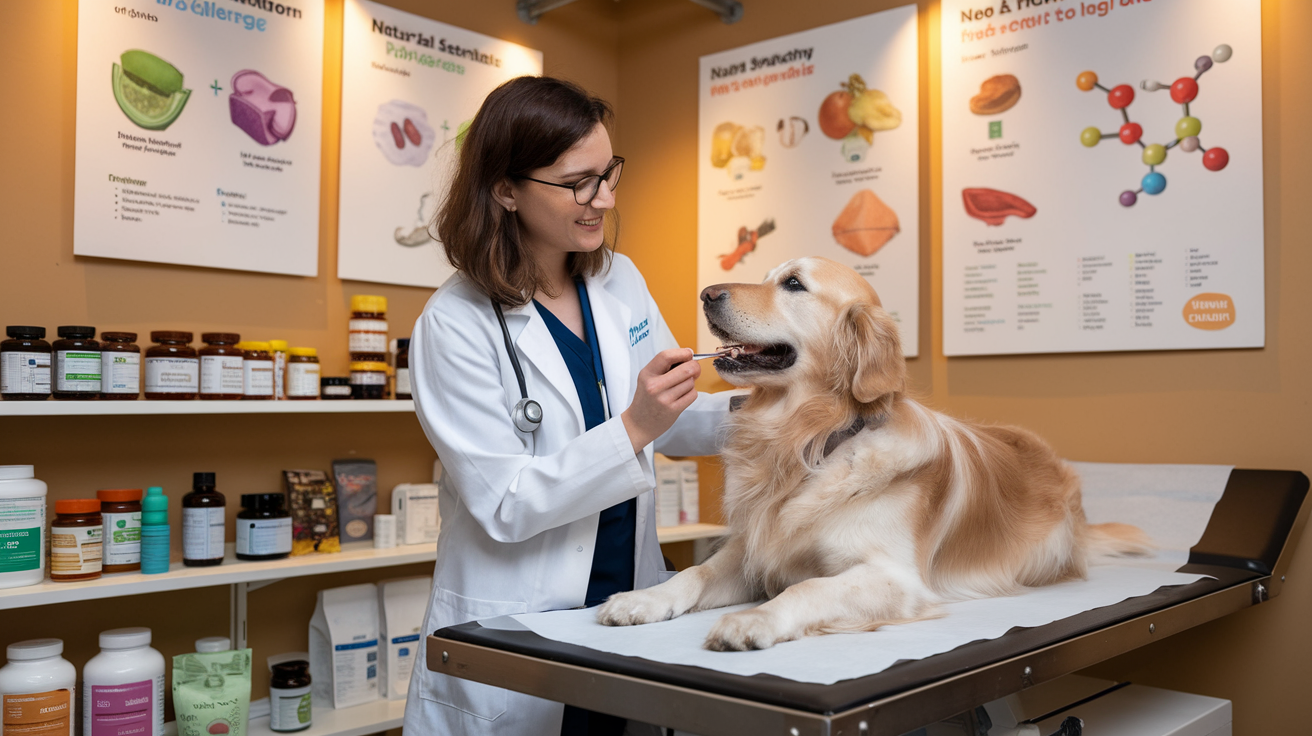
Nutrient Optimization for Allergy Relief
Orthomolecular nutrition may have a fancy name, but it’s simply the process of balancing the right molecules in the body in the right quantity. The very basis of this method is outlined by Hoffer (2008) where he states that when the body receives the nutrients it requires to function properly optimal health can be achieved.
Orthomolecular methods treat allergies by giving the body what it craves in just-right measure. Feeding your pet relevant to the need of the pet with proper food can help to reduce their allergy symptoms naturally.
Orthomolecular nutrition in pet health and allergy management is more than a supplement. It’s about building a diet that addresses imbalances and fosters overall well-being. Allegy: This concept in particular is explained best by Prousky (2013) and can be used to treat the animal. And honestly, it makes so much sense. If we’re giving our pets not just food that fills them up, but food that addresses the specific deficiencies they have, we’re setting them up for a healthier and more comfortable life.
Consider it similar to tuning a musical instrument. Just like every string must be finely tuned, no two pets have the same body, and getting the balance of nutrients right is important. When all is in sync, the resulting “music” is a properly functioning, allergy-resistant body.
Essential Nutrients for Managing Allergies
Of course, this is just a brief overview of some of the vitamins and minerals that help with managing pet allergies, but some key nutrients and how they can help are highlighted below in a table:
| Nutrient | Role in Allergy Relief | Food Sources |
|---|---|---|
| Omega-3 fatty acids | Reduce inflammation | Fish oil, flaxseed |
| Quercetin | Natural antihistamine | Apples, berries |
| Vitamin C | Boosts immune function | Leafy greens, citrus fruits |
| Vitamin E | Antioxidant properties | Sunflower seeds, almonds |
| Zinc | Supports skin health | Lean meats, pumpkin seeds |
How to implement an Orthomolecular approach
Here are the steps to follow to provide an orthomolecular approach to your pet:
- Consult with a veterinary nutritionist
- Conduct a comprehensive nutrient analysis
- Develop a personalized supplement plan
- Gradually introduce nutrient-rich foods
- Monitor your pet’s response and adjust as needed
With these nutrient-specific strategies, we can help your pet’s body develop resistance to allergies. Orthomolecular methods should not be used as a one-time solution. Allergy symptoms may take weeks to improve drastically.
With that information, you now know how to use nutrients to reduce your pet’s allergy response, so let’s check out how functional nutrition and the use of foods can be used to support your pet further.
Supplementation Strategies
Sometimes diet alone, without a proper nutritional supplementation, may not give your pet all they need to combat allergies. That’s where supplementation comes in. This can seem unbearably frustrating, however Gaby (2011) has some great information about the vitamins and minerals that may help to relieve allergic reactions. These supplements aim to enhance the pet’s natural defenses and lessen the intensity of allergic reactions.
But proceed with caution — supplementation isn’t one-size-fits-all. Ames et al. (2004) highlight the importance of dosage considerations and safety profiles. Before you decide what your pet needs — and in what dosages — it’s essential to work with your veterinarian. Sometimes a good thing can cause too much of a good thing.
Imagine you’re baking a cake. You need the right balance with just the right amount of all the ingredients to get the best results. That philosophy holds true for supplementation also for pets. Measure twice, cut once, follow the experts and adjust.
Include these techniques in your pet’s routine. Examine their diet regularly and options for supplements beneficial to allergy management. Ultimately, it’s being proactive and maximizing your pet’s comfort and health.
Functional Nutrition and Dietary Interventions
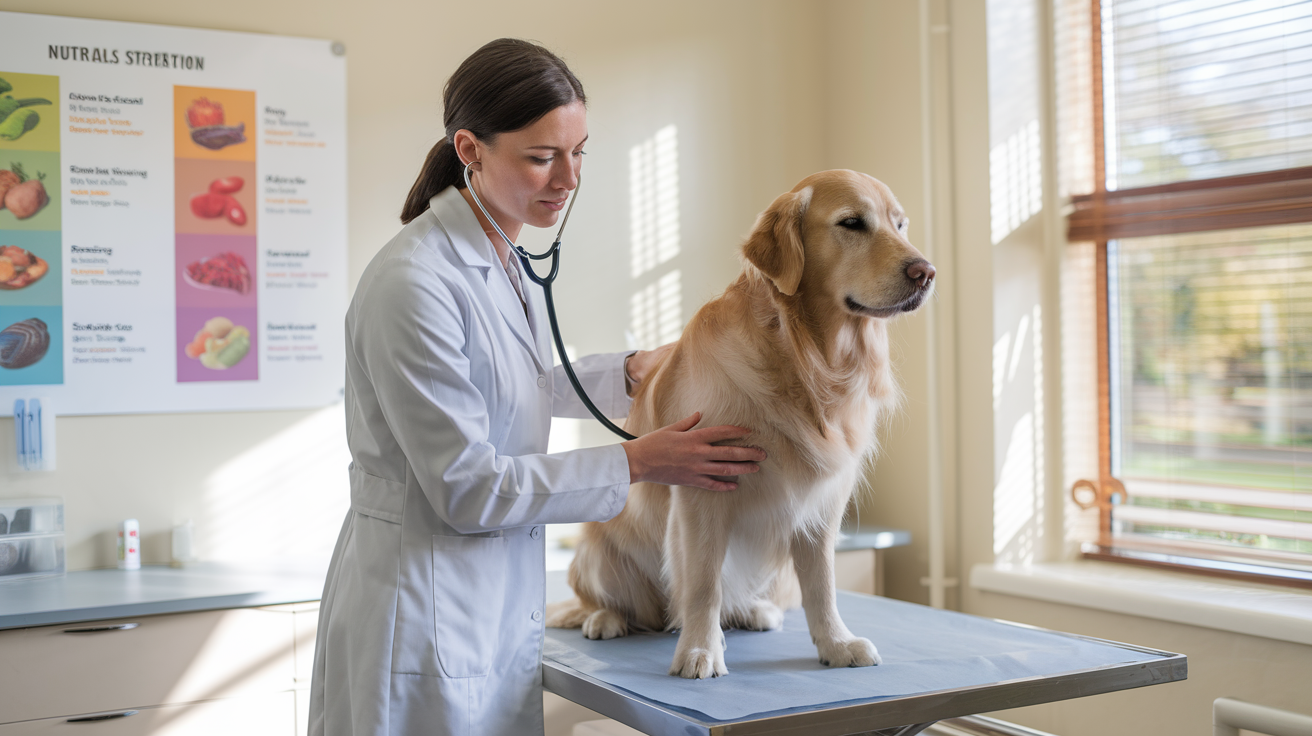
Next, let’s move on to hypoallergenic diets. These are diets that are specifically prepared to reduce the risk of causing an allergic reaction. They usually use novel proteins or hydrolyzed proteins, which are proteins that have been broken down into smaller pieces that are less likely to elicit an immune response. These diets offer several advantages in the management of pet allergies which have been discussed by (Chesney, 2002).
It helps to think of your pet’s body as a finely tuned machine. If you put in allergenic ingredients, it’s like putting in the wrong fuel — it just won’t run, and it won’t run smoothly.” A hypoallergenic diet is the ideal fuel that keeps your pet running smoothly.
Freeman et al. (2013) consider some of the pros and cons of commercial versus homemade diets. Commercial diets are convenient and formulated by scientists, while home-prepared diets allow greater control over each and every ingredient. Each choice has its pros and cons, and which one you choose depends on your pet’s individual needs and your lifestyle.
Functional Nutrition: More Than Just Food
Functional nutrition takes this further, not only looking at the what of what your pet is eating, but also how that food is functioning in the body. This is all about developing a diet that feeds a variety of bodily functions, immune systems, skin and so on.
Think of your pet’s body as a complex network of systems. Ideally every meal should be a tree or nutrient + funds to a system or nutrient you still have. That’s what functional nutrition is aiming to do—it’s comprehensive and global.
But when you broaden your focus, it’s obvious that everything has a purpose. And when you state that idea repeatedly, it turns into obvious: a deliberate food plan isn’t just approximately calories; it’s approximately first-rate. It’s a matter of making every bite count. And, frankly, isn’t that what we all want for our pets?
So this can’t be done amiss: it was a diet that packs a punch. Take small steps, incorporate changes gradually and before you know it your pet will show signs of improvement in their overall health. It all adds up — every bit counts.
Practical Tips and Takeaways
Having summarized the science and strategies, here are some action-oriented tips to get you started:
- Review Your Pet’s Diet: Examine what your pet is consuming on a day-to-day basis. Is it a complete nutritious diet? If you do not, switch to a balanced, nutritious diet, which magnets on, enhance your immune system and skin health.
- Including Anti-Inflammatory Nutrients: Include omega-3 fatty acids and antioxidants, such as vitamins E and C, in your diet, as these help combat inflammation and alleviate allergies. Oftentimes it could just be small changes that help.
- Hypoallergenic Diets (Look into them): And if your pet has symptoms of a serious allergy, speak to your veterinarian about hypoallergenic diets. Depending on your pet’s individual circumstances, there are commercial and homemade alternatives to consider.
- Institute Metabolomic Biomarker Monitoring: Although it can seem a little technical, the concept is easy: personalized nutrition is most effective when you know all your pet’s individual metabolic requirements. If allergies continue, ask your vet if metabolomic testing might be an option.
- Use Supplements Wisely: Supplements can be an excellent source for your pet’s diet, but they must be used with caution. Avoid overdoing it, and talk to your vet first to make sure it’s safe.
- Be Consistent: Dietary changes don’t lead to overnight success. Be patient and consistent. Monitor your pet’s symptoms, and make dietary changes gradually. And if there is something that doesn’t work, adjust it.”
- Stay Informed: Pet nutrition and diet is a constantly changing field. What works today may improve tomorrow. Monitor the situation by speaking with your vet and reading up on the latest research.
- Ask yourself: What can I do today to enhance my pet’s quality of life? Every step helps, whether it is a slight modification in the meal plan, or a visit to the vet. Only you can make the best choices for your pet’s health and happiness!
Hypoallergenic Diets for Allergy-Prone Pets
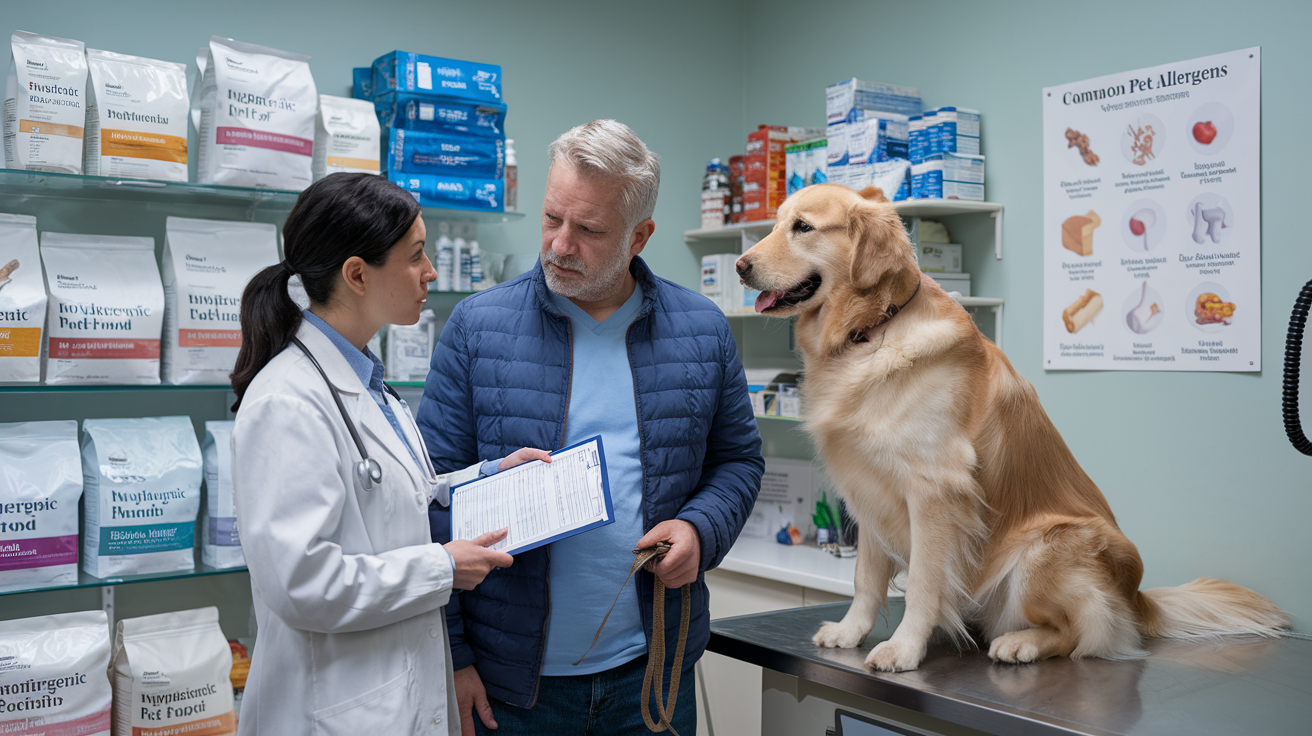
What Are Hypoallergenic Diets?
A food-allergy diet is a way to get your pet’s allergies under control. In those cases you’re going to want to feed primarily nutrient-dense, low-allergen foods that will help support your pet’s immune response. Here’s a quick guide to help you get started:
| Food Type | Benefits | Examples |
|---|---|---|
| Novel Proteins | Reduce allergic reactions | Duck, rabbit, venison |
| Omega-3 Fatty Acids | Anti-inflammatory properties | Fish oil, flaxseed |
| Probiotics | Improve gut health | Yogurt, kefir (pet-safe varieties) |
| Antioxidants | Boost immune function | Blueberries, sweet potatoes |
Elimination Diets and Food Trials
You might need to conduct an elimination diet to identify your pet’s specific food triggers. Here’s how you can approach this:
- Choose a single protein and carbohydrate source your pet hasn’t eaten before
- Feed this diet exclusively for 8-12 weeks
- Monitor your pet for any improvement in symptoms
- Gradually reintroduce potential allergens one at a time
- Observe any reactions to pinpoint the problematic ingredients
Supplementation for Enhanced Nutrition
To further support your pet’s health, you can consider adding supplements to their diet. Some beneficial options include:
- Quercetin: A natural antihistamine
- Bromelain: Enhances quercetin absorption
- Vitamin E: Supports skin health
- Zinc: Aids in skin repair and immune function
Remember, always consult with your veterinarian before making significant changes to your pet’s diet or starting any new supplements. They can help you create a nutrition plan tailored to your pet’s specific needs and ensure you’re providing the best possible care for your allergy-prone companion.
Comprehensive Treatment Strategies
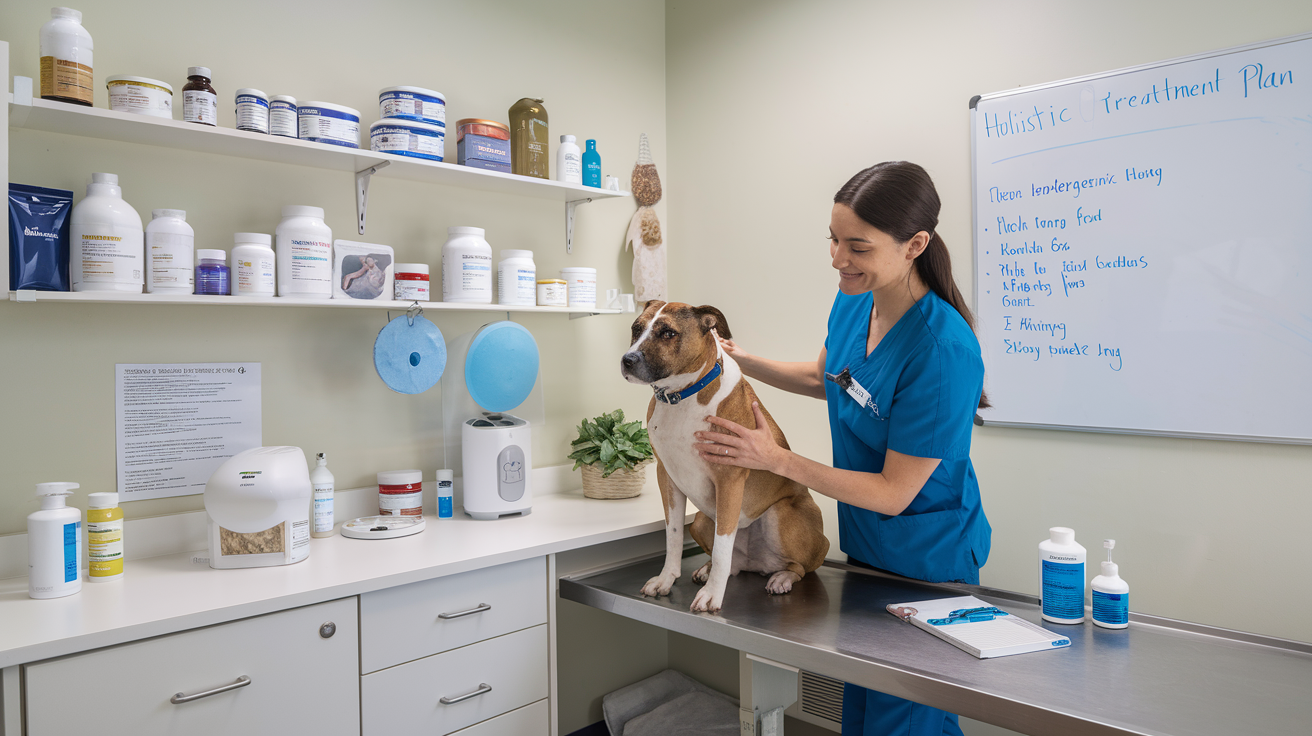
Now that we’ve explored hypoallergenic diets for allergy-prone pets, let’s delve into comprehensive treatment strategies to alleviate your pet’s discomfort.
A. Veterinary-prescribed medications and therapies
When managing your pet’s allergies, veterinary-prescribed treatments play a crucial role. Your veterinarian may recommend:
- Antihistamines: To reduce itching and other allergy symptoms
- Corticosteroids: For more severe inflammation and itching
- Immunotherapy: Gradually desensitizes your pet’s immune system to specific allergens
| Treatment | Purpose | Potential Side Effects |
|---|---|---|
| Antihistamines | Reduce itching and sneezing | Drowsiness |
| Corticosteroids | Decrease inflammation | Weight gain, increased thirst |
| Immunotherapy | Long-term allergy management | Rare allergic reactions |
B. Home remedies and lifestyle adjustments
In addition to prescribed treatments, you can implement several home strategies to manage your pet’s allergies:
- Regular bathing: Reduces allergens on your pet’s skin and fur
- Frequent cleaning: Minimize allergens in your home environment
- Air filtration: Use HEPA filters to remove airborne allergens
- Pet-free zones: Establish areas in your home where your pet isn’t allowed, especially bedrooms
C. Tailored treatment plans for individual pets
Remember that each pet’s allergy profile is unique. Work with your veterinarian to develop a personalized treatment plan that may include:
- Specific medication combinations
- Dietary restrictions or supplements
- Environmental modifications
- Regular check-ups to monitor progress and adjust treatments as needed
By implementing these comprehensive strategies, you’ll be better equipped to manage your pet’s allergies effectively. With this approach in mind, next, we’ll explore preventive measures for year-round comfort, focusing on how to minimize allergen exposure and maintain your pet’s overall health to reduce allergy flare-ups.
Preventive Measures for Year-Round Comfort
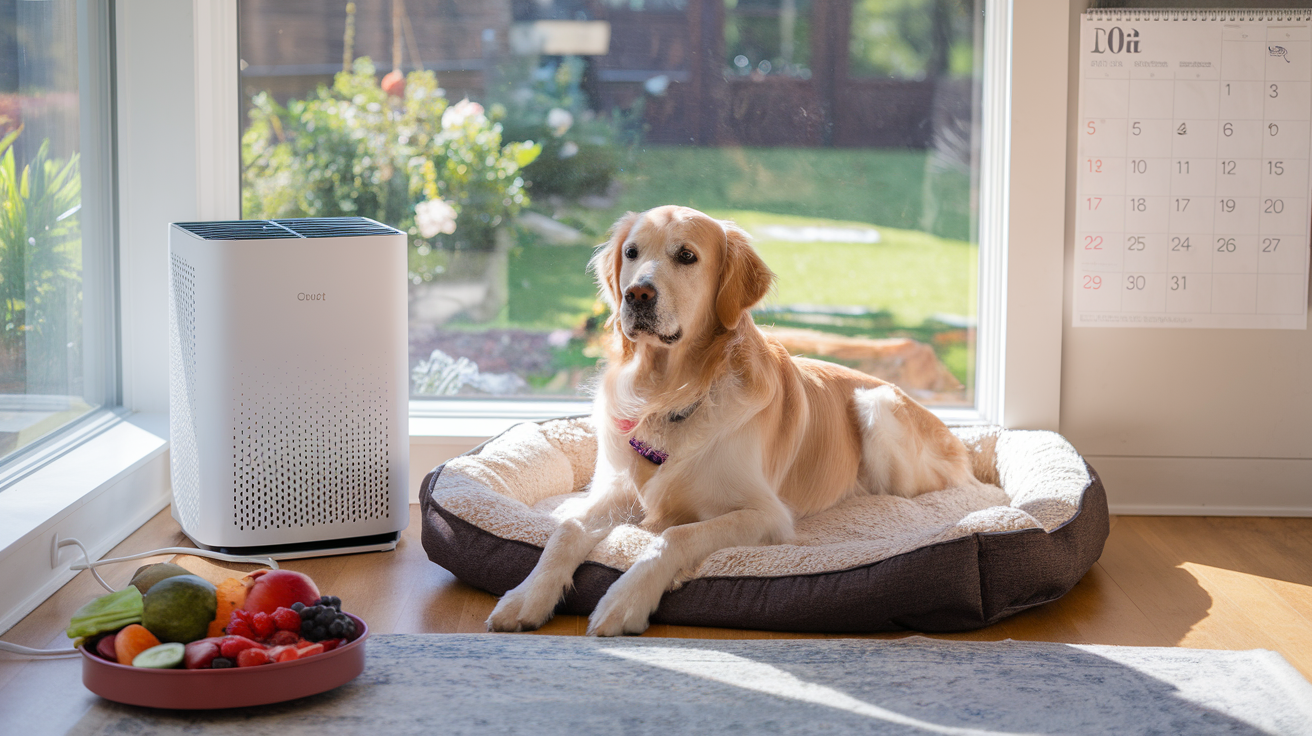
Now that we’ve covered comprehensive treatment strategies, let’s focus on preventive measures to ensure your pet’s year-round comfort.
A. Environmental control and allergen reduction
You can significantly reduce allergens in your pet’s environment by implementing these strategies:
- Vacuum and clean regularly to minimize dust and pet dander
- Wash your pet’s bedding in hot water frequently
- Use air purifiers with HEPA filters to trap airborne allergens
- Wipe your pet’s paws and coat after outdoor activities to remove pollen
Creating pet-free zones in your home can also help manage allergen exposure. Remember, allergens can persist long after removal, so maintaining a clean environment is crucial.
B. Dietary considerations and hypoallergenic options
Your pet’s diet plays a vital role in managing allergies. Consider these dietary approaches:
- Consult your veterinarian to identify potential food allergens
- Choose high-quality, hypoallergenic diets
- Implement strict diet trials with novel protein sources or hydrolyzed diets
- Avoid additional foods or flavored medications during trials
| Diet Type | Duration | Key Points |
|---|---|---|
| Novel Protein | 8-12 weeks | Introduces a new protein source |
| Hydrolyzed | 8-12 weeks | Proteins broken down to reduce allergic reactions |
C. Regular grooming and skin care practices
Proper grooming is essential for managing your pet’s allergies:
- Brush your pet regularly to remove loose hair and dander
- Use gentle, pet-safe shampoos recommended by your veterinarian
- Avoid over-bathing, which can strip natural oils and irritate skin
- Apply flea and tick preventatives year-round to avoid exacerbating symptoms
By maintaining these practices, you’ll help reduce allergens and keep your pet comfortable. Remember to consult with your veterinarian before using any over-the-counter medications or changing your pet’s care routine.
With these preventive measures in place, you’ll be better equipped to monitor and manage any allergy-related complications that may arise. Regular check-ups with your veterinarian will help you stay on top of your pet’s allergy management and overall health.
Monitoring and Managing Allergy-Related Complications
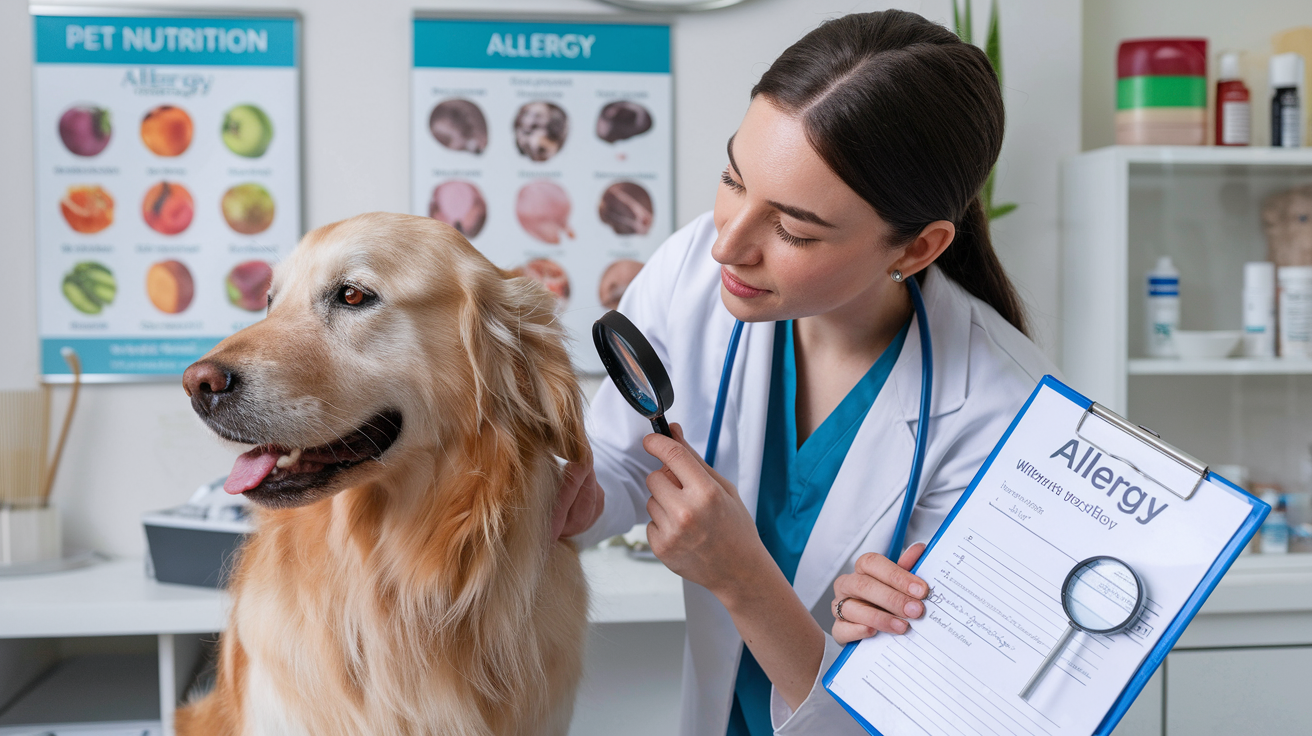
Now that we’ve covered preventive measures for year-round comfort, let’s delve into monitoring and managing allergy-related complications in your pets.
Recognizing severe symptoms and when to seek help
While managing your pet’s allergies, it’s crucial to be vigilant about severe symptoms that may require immediate attention. You should watch out for:
- Persistent coughing or wheezing
- Difficulty breathing
- Extreme lethargy or weakness
- Severe skin irritation or excessive scratching
If you notice any of these symptoms, it’s time to consult your veterinarian. Remember, chronic inflammation from allergies can lead to more serious conditions, such as bacterial sinus infections or asthma attacks in pets with pre-existing respiratory issues.
Addressing secondary issues like skin infections
Pet allergies often manifest as skin problems, which can lead to secondary complications. Here’s what you need to know:
- Allergic dermatitis can result from direct contact with allergens
- Symptoms may include hives, eczema, and itchy skin
- Persistent scratching can break the skin, potentially leading to infections
To address these issues:
- Keep your pet’s skin clean and dry
- Use veterinarian-recommended medicated shampoos or wipes
- Monitor for signs of infection, such as redness, swelling, or unusual odor
Importance of consistent flea and tick prevention
Fleas and ticks can exacerbate your pet’s allergy symptoms and introduce new health risks. Here’s a comparison of the impact of these pests on allergic pets:
| Pest | Allergy Impact | Additional Risks |
|---|---|---|
| Fleas | Can trigger severe allergic reactions | May cause anemia, transmit tapeworms |
| Ticks | May intensify skin irritation | Can transmit serious diseases like Lyme disease |
To protect your pet:
- Use year-round flea and tick prevention as recommended by your vet
- Regularly check your pet for signs of fleas or ticks, especially after outdoor activities
- Keep your home environment clean to prevent pest infestations
By staying vigilant and addressing these aspects of allergy management, you can help ensure your pet’s comfort and well-being throughout the year.

Conclusion
This is a full dive into the world of seasonal allergies and how nutrition can help with it. We’ve gone from exploring the causes and symptoms of allergies to how specific foods can help strengthen the immune system and promote skin health. And we haven’t stopped there. We’ve explored how newer approaches like metabolomics and orthomolecular nutrition can provide fresh perspectives and customized solutions for pet allergies.
At its heart, seasonal pet allergies isn’t all there is to the story, as it’s not so much about combating symptoms, but improving overall quality of life. It’s about ensuring your pet can enjoy all seasons without that nagging discomfort of allergies. This all begins with nutrition.
Think about your pet’s life. Every meal is an opportunity. Each ingredient is a step toward better health. So, take action today. Reassess your pet’s diet, ask the professionals, and consider alternative holistic options. It may seem overwhelming at first, but believe me—little by little, you are creating a world in which your pet can really thrive.
Remember, it’s the little changes done consistently that will impact most. Don’t wait for the next allergy season to begin making changes. Act now, and your furry friend will reward you with wagging tails, energetic hops, and gleaming loving eyes.
Seasonal allergies in pets are managed unpleasant but not impossible. A proper nutritional strategy can ease this discomfort, and help your pet enjoy a happier, healthier life all year round. And if it ever gets to be too much, just remember: you’re not alone. A whole community of pet owners, veterinarians and nutrition experts is waiting to share advice, tips and success stories with you. We can help you make a real difference in your pets’ lives.
So, what will you do today? Review your pet’s diet. Include anti-inflammatory nutrients. Consider hypoallergenic choices. Every step counts. And who knows? Perhaps months later you’ll notice a dramatic improvement in your pet’s health. It’s not just food — it’s love, care and a commitment to your pet’s well-being.
References
Books and General Resources:
Gaby, A. R. (2011). Nutritional Medicine. New York: Fritz Perlberg
Hand, M. S., et al. (2010). Small Animal Clinical Nutrition. 5th ed. St. Louis: Mosby.

